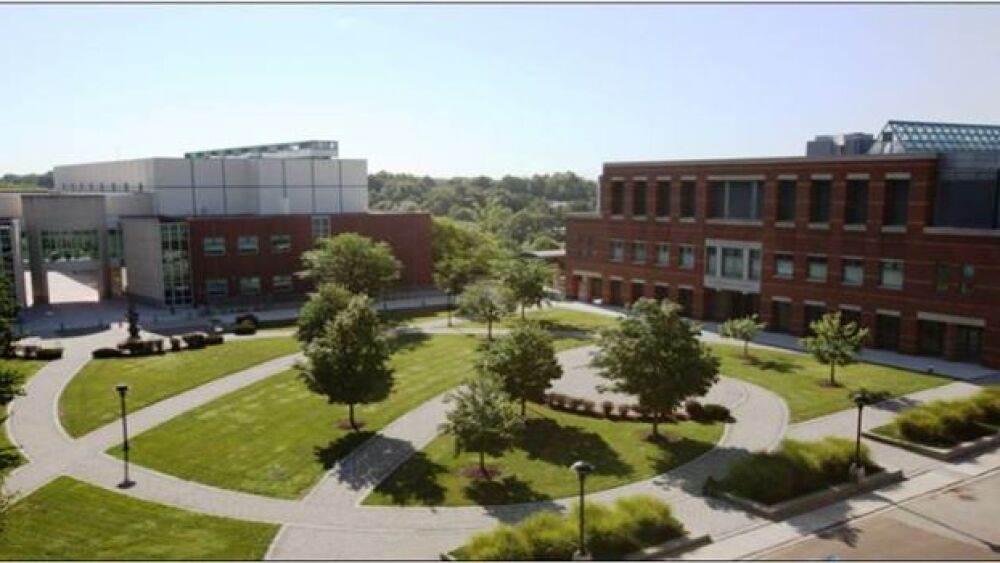Philip Dormitzer explained that there are plenty of reasons to be excited about the prophylactic and therapeutic potential of mRNA.
Pfizer’s Pearl River Facility in New York
In anticipation of the upcoming Pfizer mRNA Virtual Career Fair scheduled for Tuesday, September 14, 2021, BioSpace spoke with Philip (Phil) Dormitzer, MD, PhD, Pfizer’s Vice President and Chief Scientific Officer, RNA and Viral Vaccines, who provided insight into the pharmaceutical leader’s mission to deliver up to six innovative vaccines by 2025.
Pfizer is at the forefront of a new scientific era. With the recent development and approval of the world’s first mRNA vaccine, the Pfizer-BioNTech COVID-19 vaccine, and a deep pipeline of innovative vaccines in development, the company is poised to help the world be prepared for current and future global health emergencies as well as to help protect people from infectious diseases. mRNA is an important part of that, and Pfizer is looking to build its team with people who want to be on the ground floor for the next potential big breakthroughs for patients.
“There are a lot of career opportunities,” Dormitzer said. “I think it’s always good to be part of something that is innovative and growing, and that is exactly what RNA is right now. People are learning a science and a skill set that is in tremendous demand.”
He added that there are a number of positions currently available and possibilities for career growth within the company:
“At Pfizer right now, there is an opportunity to really be part of something that is not only successful but is innovative, growing, already having an important impact on human health and which has the potential to have more impact in the future.”
As the company continues to build on its position of leadership in developing mRNA vaccines, it will apply mRNA technologies and other leading-edge technologies in its efforts to develop best-in-class vaccines for some of the world’s most complex and baffling infectious diseases.
Dormitzer explained that there are plenty of reasons to be excited about the prophylactic and therapeutic potential of mRNA.
“With our COVID-19 vaccine, there has now been definitive proof of concept that RNA vaccines work,” he said. “With that proof of concept, we anticipate not only more RNA-based vaccines in the coming years but increasing our research and development of RNA for potential applications beyond vaccines.”
According to Dormitzer, mRNA has potential value in areas such as gene editing and antibody expression. From a vaccine standpoint, he explained that one of its biggest advantages is its flexibility.
Dormitzer shared that Pfizer’s Vaccines Research and Development team is highly mission-driven, and for them, this mission to develop the Pfizer-BioNTech COVID-19 vaccine was personal. Much of the development work for the vaccine took place at Pfizer’s Pearl River Vaccines Research and Development headquarters, just 30 miles from Manhattan, so the team had a front-row seat to the devastation happening in the pandemic’s early epicenter.
“When you walked around New York City, it was just obvious that something terrible was going on,” he said. “There was a very strong motivation because this was not a remote thing that was happening. This was happening in the community of the people who were doing the work.”
While Pfizer continues its efforts to help end the COVID-19 pandemic, the work doesn’t stop there. The company boasts an impressive pipeline of novel and next-generation vaccines aimed at helping to prevent serious infectious diseases and improving lives.
In June, the U.S. Food and Drug Administration (FDA) approved Pfizer’s PREVNAR 20™, a pneumococcal 20-valent conjugate vaccine for the prevention of invasive disease and pneumonia associated with 20 Streptococcus pneumoniae (pneumococcus) serotypes in adults. A pediatric vaccine for invasive and non-invasive pneumococcal infections is currently in phase III trials.
Other candidates in late-stage development include a prophylactic vaccine for primary Clostridium difficile infection, a vaccine against meningococcal disease, and a maternal respiratory syncytial virus (RSV) vaccine. Dormitzer is particularly passionate about this one.
“RSV is a major cause of respiratory disease in infants. It is the leading cause of hospitalization of infants in developed countries and a very important cause of infant mortality in lower income countries,” he said.
Scientists have been working since the 1960s to develop a vaccine for RSV, but the key vaccine antigen has two shapes, and early efforts failed because the wrong one was being used. Building on work done at the National Institutes of Health and working with Pfizer’s internal structural biologists, Pfizer was able to stabilize the correct shape of the antigen that they think will help the vaccine candidate provide protection against disease caused by RSV.
“We have early data suggesting that [the vaccine] works very well to help prevent RSV, and now we’re doing the large clinical trials to understand and evaluate whether the vaccine candidate is safe and effective,” Dormitzer said.
At Pfizer, this type of innovation is enabled by a team of dedicated individuals.
“People who work in vaccines R&D believe in the importance and public health benefits of vaccines. They’re passionate about it,” Dormitzer said. “It’s also a feeling that you are working in a truly cutting-edge environment, I don’t know a place that is set up better than Pfizer to make the next generation of innovative vaccines.”
There is also an understanding that this kind of work takes a village made up of complementary skill sets.
“We have people who are true experts in their field, and there is tremendous respect for all the capabilities that people have to advance a vaccine, from early-stage research to large scale manufacturing,” Dormitzer said. “It takes people with many different kinds of unique expertise, and what I see is that people have a lot of respect, not only for others in their group but also for the people who have the different sets of skills that are needed to effectively make a vaccine.”
Pfizer is looking to add a variety of unique expertise to its vaccines R&D village. This includes discovery scientists, bacteriologists, virologists, biostatisticians, clinicians and bioprocess and assay development specialists. There is a broad array of opportunities currently available, from entry-level roles to those requiring an advanced degree.
Successful candidates will join Pfizer’s global community of more than 800 talented colleagues in Pearl River, NY, Collegeville, PA or one of several international campuses. The team is mentored by leaders at the forefront of scientific innovation, such as Dormitzer and Kathrin Jansen, Ph.D., Pfizer’s Senior Vice President and Head of Vaccine R&D. Annaliesa Anderson, Ph.D., Pfizer’s Vice President and Chief Scientific Officer, Bacterial Vaccines & Hospital, spearheads the development of vaccines against infectious diseases caused by bacteria, while Bill Gruber, MD, Pfizer’s Senior Vice President, Vaccine Clinical R&D is responsible for the global clinical development of vaccines.
Although it took a global pandemic to remind many in the general public of the value of vaccines, Pfizer has long possessed the scientific foresight that has made it a leader in vaccine research and development. If it’s something you’d like to be part of too, find out more at pfizercareers.com.
Featured Jobs on BioSpace







